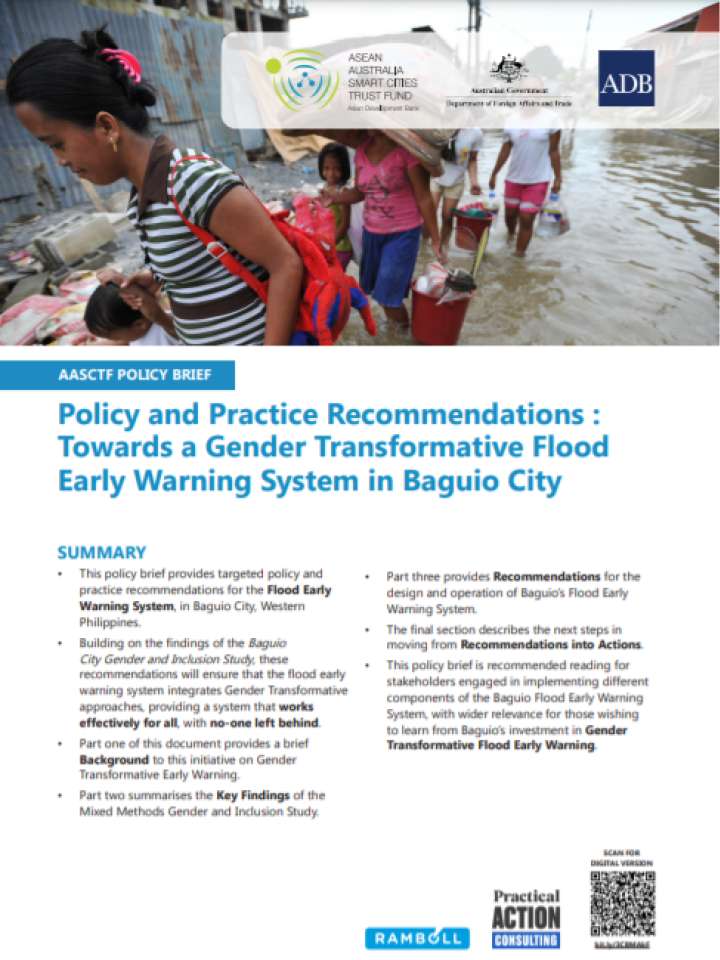AASCTF Policy brief - Policy and practice recommendations for a gender transformative flood early warning system in Baguio City
This paper analyzes current practices and policies involving Baguio City's flood early warning system (FEWS) in conjunction with the The Smart Flood Early Warning, Information and Mitigation System, a project under the AASCTF that is assisting the city with both the planning for flood mitigation and the delivery of the services of flood early warning and responses, using smart technologies. As a complement to this, the Gender Transformative Approach for Strengthened Development, Application, and Replication of the Baguio City Smart Flood Early Warning project is being implemented specifically to ensure appropriate, applicable, and timely early warning reaches the last mile, including the most vulnerable, recognizing that effective FEWS are people-centric.
The findings show that in terms of vulnerability and impact, caring responsibilities were a key driver of vulnerability, with single parents particularly struggling to safely evacuate with children and with essential supplies. Existing support targeted those with long-standing physical disabilities, without sufficient flexibility to target additional support to those with short-term capacity challenges. City-wide risk knowledge practices and activities, such as risk mapping, need to take account of changing population dynamics, changing exposure, and changing flood risk patterns. With regard to monitoring and warning, the current one-size-fits-all early warning lead time was not effective for all, with differing needs and preferences for early warning. Dissemination and communication need improvement as warnings do not yet reach everyone. Facilities in evacuation centers were inadequate and governance gaps meant that capacities are not optimized. The study also identified foci for improving Baguio City's FEWS, namely gender and inequality, improving the understanding of risk, communicating preparedness plans, robust dissemination strategies, person-centered evacuations, and safety and dignity in temporary shelter.
Explore further
